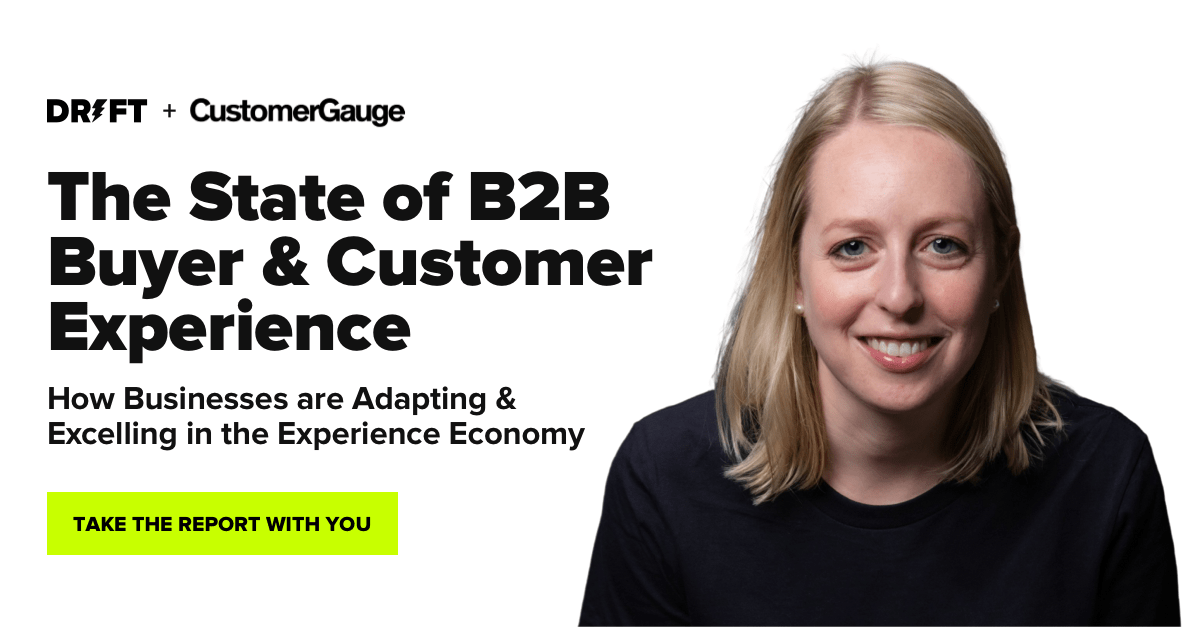For years, marketers claimed that personalization was the “future of customer experience.”
Well, that future is here….and it’s not pretty.
Drift’s 2020 State of Conversational Marketing report found that 53% of buyers are frustrated by the number of irrelevant ads and emails they get from B2B companies.
And they’re not the only ones feeling the pain. Companies are missing out too. According to McKinsey, personalization can deliver eight to 10 times the return on marketing investment and grow revenue and retention by up to 10-30%.
Marketers, it’s time to stop leaving money on the table and start creating better experiences for buyers and customers to drive marketing ROI. The good news is, we’re here to help.
I spoke with CustomerGauge’s Cary Self, who shared the tactical steps and best practices you need to deliver personalized digital experiences at scale throughout the entire customer lifecycle – plus competitive benchmarks to measure your success and increase your marketing ROI.
If you want to watch our presentation, click here. Otherwise, keep reading for all the insights 💡
Create Personalized Customer Experiences That Scale
Easy, right?
It may not be easy, but it’s essential. Customer attention matters more than ever in our digital-first world.
Product will only get you so far.
Think about it this way: 84% of B2B sales start with a referral.
Personalization isn’t just about “Hi, first name.” It’s about making connections on a personal level. And it’s tied to the bottom line.
2020 was a wake-up call. Businesses learned they’ll be left behind without…
- Personalized customer experiences
- That happen in real-time
- On digital channels
- With a strategy to scale
Because that’s what will make customers want to do business with you.
10 Best Practices for Increasing Your Marketing ROI
Revenue is everything. Whether you’re in marketing, sales, customer success…that’s the main metric you care about.
There isn’t one magical one-size-fits-all solution that’s going to grow your business.
It’s a combination of internal and external processes that provide an engine for personalization. If you want to increase your marketing ROI, start here 👇
1. Everyone Owns Customer Success
Drift and CustomerGauge reached out to 100+ B2B companies to assess the state of buyer and customer experience. We asked them, “Who owns customer success?”
The answer? Everyone. That’s the secret to the most successful companies today.
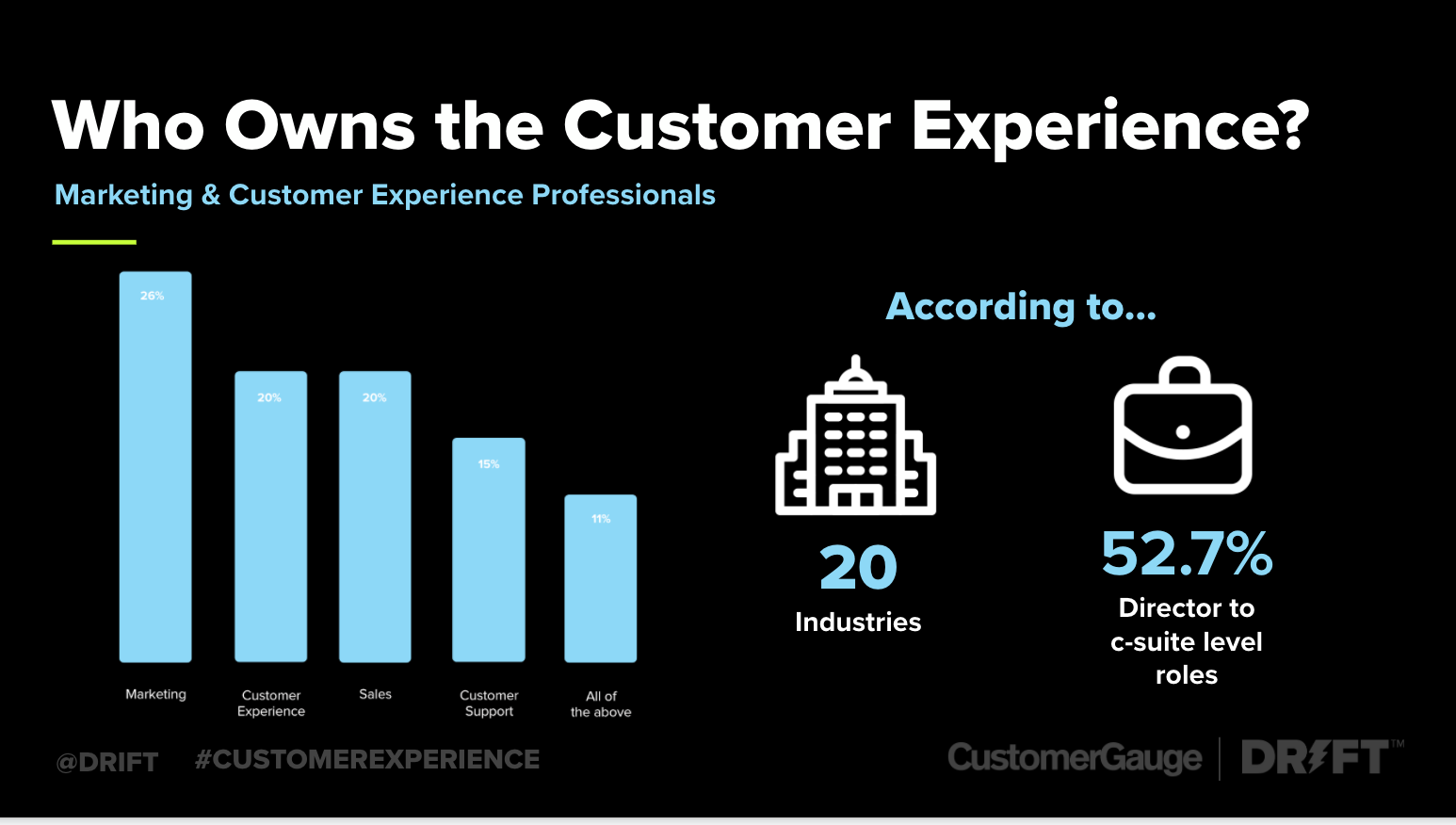
But this is also why it’s so hard to be customer-centric.
If customer experience is a problem for another team, then you’ll never be able to put the customer at the center of everything you do.
The way you’re going to create a happy, repeat customer – or a customer advocate – is by ultimately fulfilling the promise you made in the beginning during the sales process.
And that takes everyone.
2. Customer-Centricity Isn’t Just a Word
When we dug deeper, we realized that the second reason customer-centricity is so difficult to do in practice is that teams find that customer experience is challenging to measure.
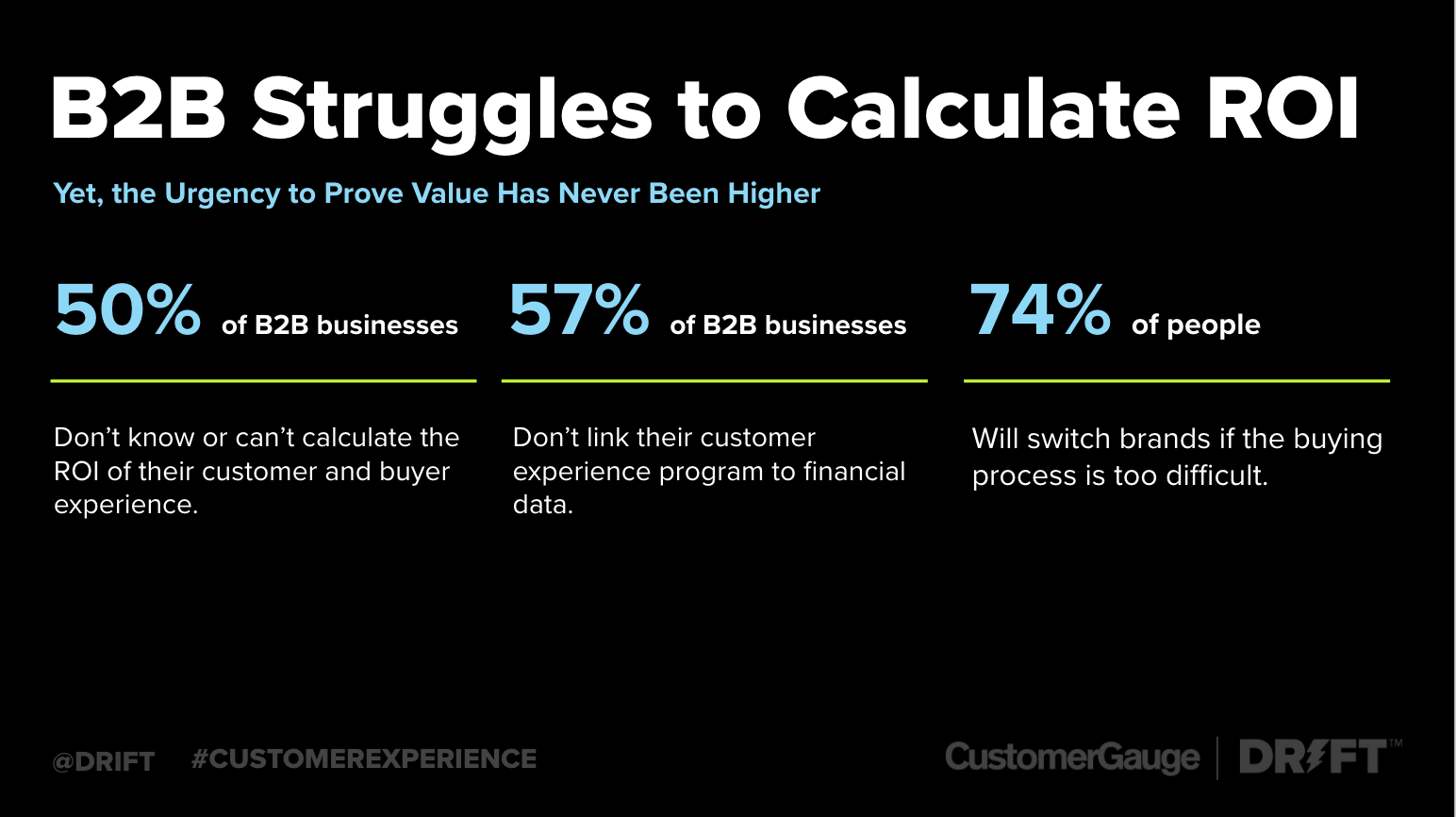
We found in the State of B2B Buyer and Customer Experience report that 50% of businesses don’t know or can’t calculate the ROI of their customer and buyer experience…but 74% of people switch brands if the buying process is too difficult.
Customer-centricity needs to be a value at every level of the organization. You need leadership buy-in to make the right investments that personalize your customer experience and impact your marketing ROI.
To do that, you need to prove the value of what you’re doing in the language your leadership speaks.
So, revenue.
At Drift, the customer’s at the center of our new business motion, of our retention and success motions, and our account management and upsell motions. We focus on customer lifetime value for everyone, not just our customer success team.
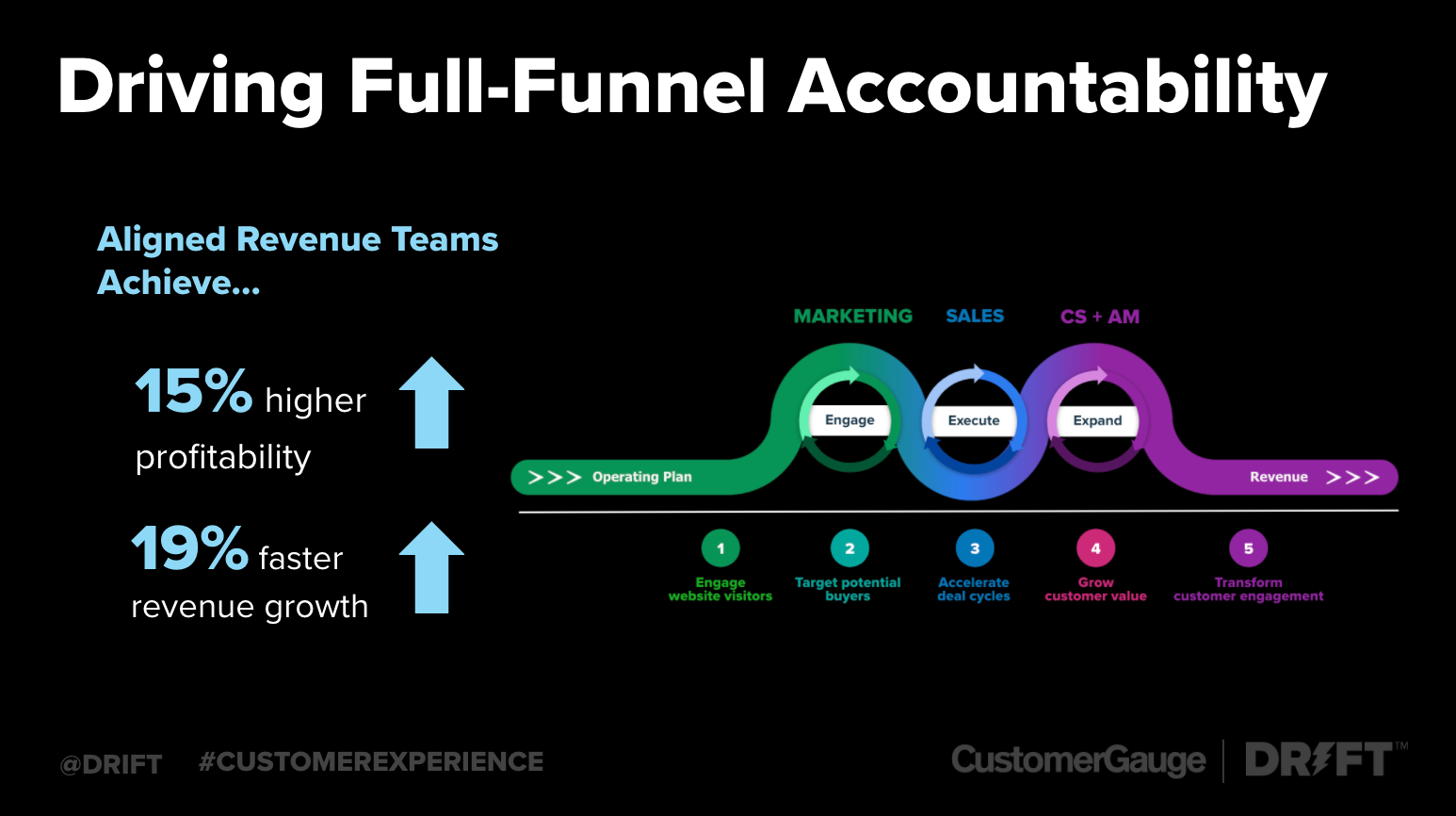
Too many people use NPS or CSAT as a way to pat themselves on the back.
NPS asks, “How likely are you to recommend us to a friend or colleague?”
You need to know, “Why would someone recommend us to a friend or colleague.”
NPS and CSAT can be great, don’t get me wrong. But you need to dig deeper behind the NPS to understand what’s important. How are they engaging with you? What do they care about? Are you delivering on expectations?
You need a North Star metric for each team that aligns them to customer lifetime value.
- Marketing measures pipeline
- Sales measures closed deals
- Customer success measures referrals
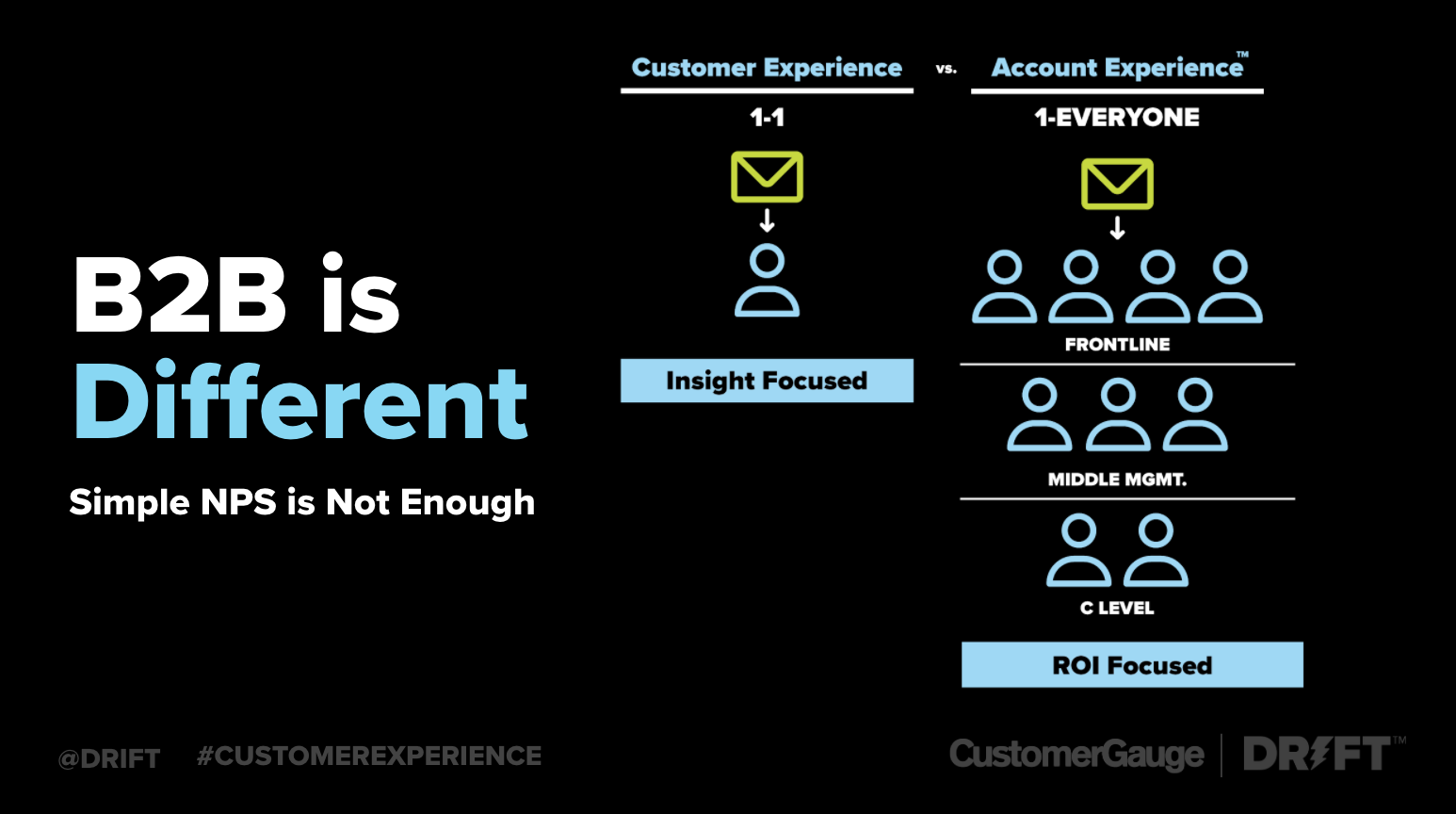
Measure customer value and the outcomes your service and your product deliver to your customers and translate that in terms of revenue so the whole organization rallies around your customers.
Don’t do it because I’m saying it. Do it because aligned teams drive 15% higher profitability and 19% faster revenue growth.
That’s the kind of language that will get leadership attention.
3. Start with a Personalized Website
Any of these sound familiar?
- Lack of insight into the journey and experience
- Website and other channels fail to convert
- Difficulty forecasting pipeline
You know what solves all three of these challenges? Personalizing your website.
Whether you’re using email, social media, advertisements, or events to attract new customers, they have one thing in common: they send prospects to your website.
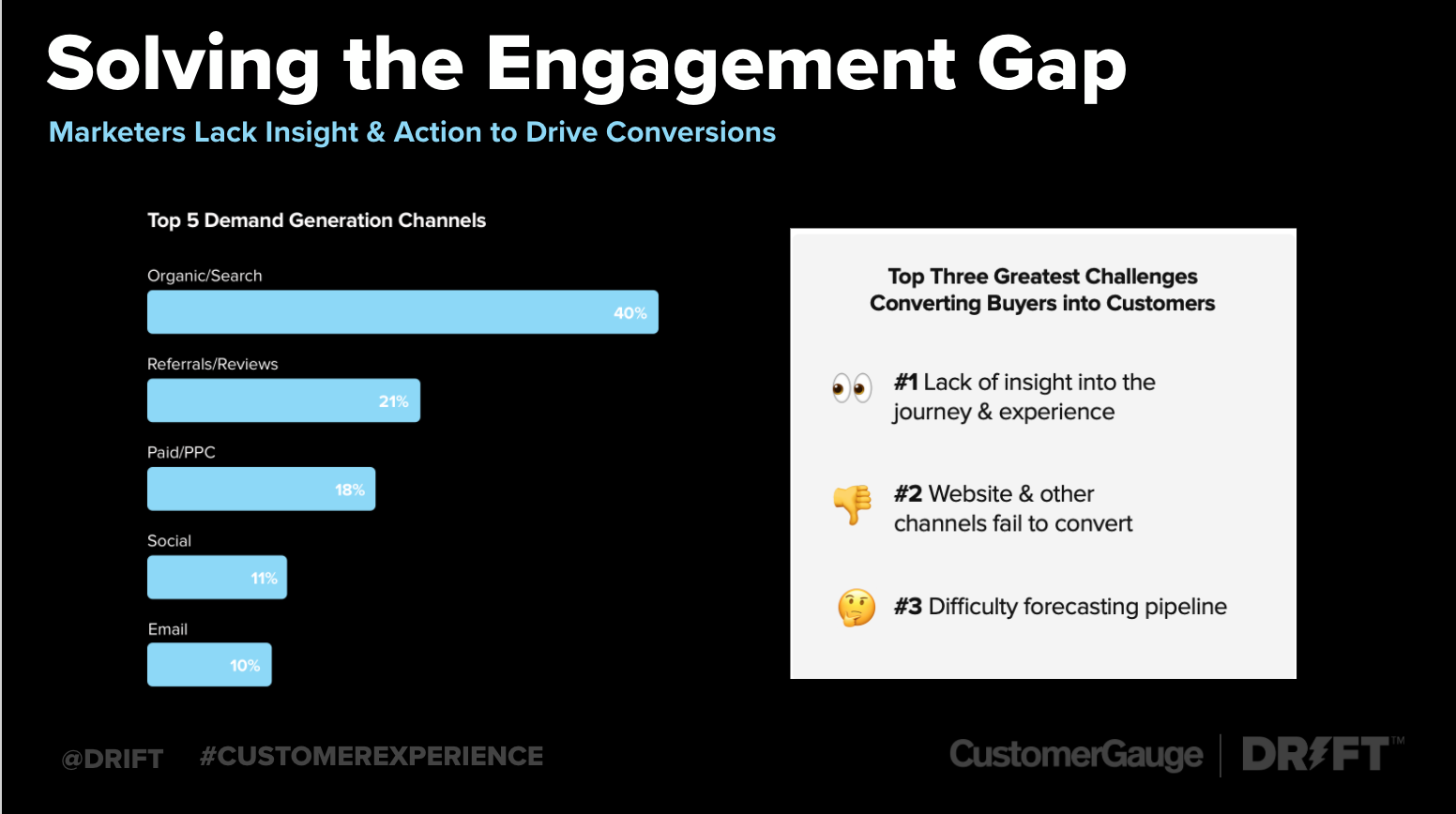
60-80% of the buying experience happens without a salesperson ever talking to someone.
Your website is your storefront. And it’s time to transform websites from being marketing-centric to customer-centric for a higher return on marketing investment.
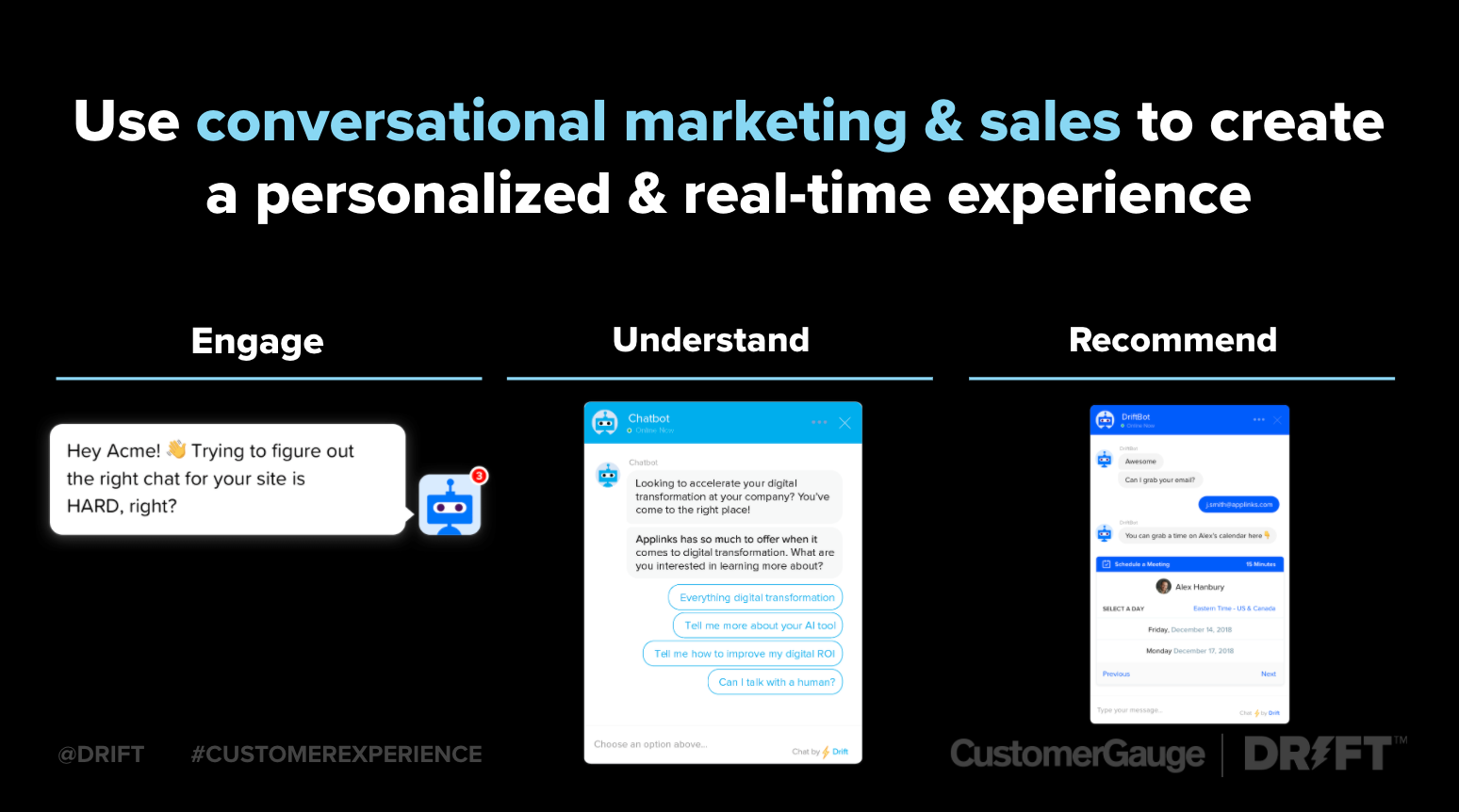
Make your website a conversation. It’s not just about changing the layout or branding, but creating a real-time experience for each customer who walks through your digital front door. That means:
- Engage: Meet them where they are. Using firmographic information and IP data, identify who arrives at your website and what they might be interested in.
- Understand: Deliver them to the right person at the right time to understand what problems they have and how to solve them.
- Recommend: Help them find the best solution for them.
It’s called the Conversational Framework here). And it’s how people have conversations in the real world.
It’s like going into the Apple store. Are you going to talk to a sales associate or do you need help at the Genius Bar? Who are you going to talk to and get them connected quickly? Or maybe you’re just browsing and aren’t sure what you want yet.
You can recreate that exact experience on your website in real-time so any visitor feels like you’re there to help them, and not the other way around.
4. Be First to Act
Real-time is actually what your buyers want from you.
They want answers, and they want them now.
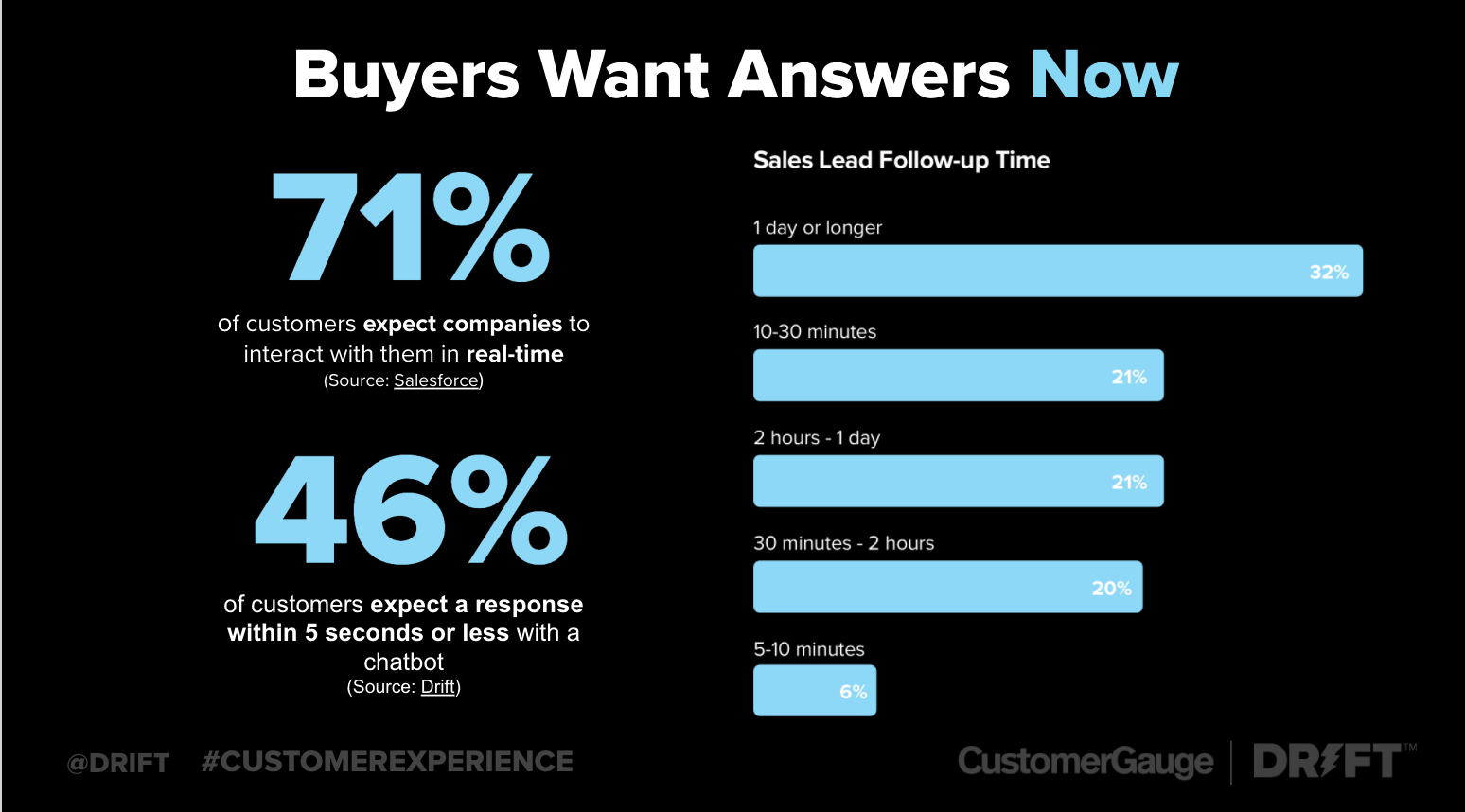
71% of customers expect companies to interact with them in real-time, while 46% of customers expect a response within five seconds or less on chat.
That’s faster than it takes to read this sentence.
When we asked B2B leaders how long it actually takes them to respond, only 6% said they met those expectations.
That’s a huge opportunity to align your sales, marketing, and support efforts so you can respond in the moment.
If you’re not acting fast, you’re disappointing your customers, or worse, distracting them so they try one of your competitors, who can give them that experience.
The days of sending off a form and waiting for someone to contact you are officially over.
5. Nail the Sales-to-Support Handoff
The most important part of the customer experience isn’t actually the buying process.
It’s the onboarding process.
You’ll just spend your time refilling a leaky bucket if you can’t get it right. But when we asked B2B leaders in the State of B2B Buyer and Customer Experience report, 57% of respondents said their onboarding was only “somewhat effective.”
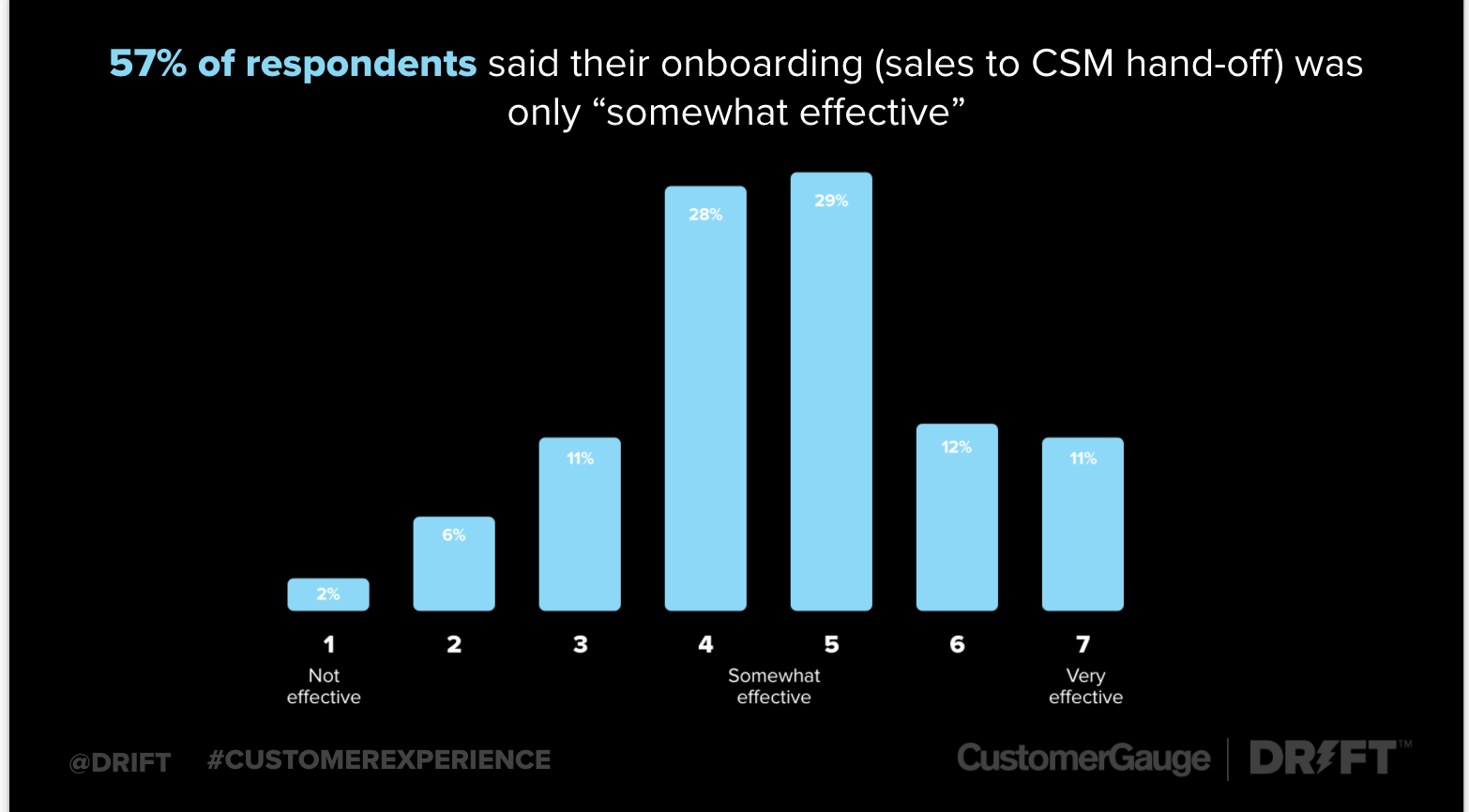
You’re never going to have a customer more excited than that moment right there. The first month to three months of a customer’s lifecycle is the most important. You’re building momentum, value, and engagement.
Expectations are high, and if you don’t meet them, you’ve already lost them.
You’ve spent all this time helping them down the funnel, being responsive, making promises. Without a good onboarding program, you’re basically saying, “See you later. Good luck!”
You need to respond to what they need. To increase your marketing ROI you need new, retained, and upsold business. And you won’t get the last two unless you fix your leak.
6. Have a Feedback Strategy
You can’t be customer-centric without listening to your customers.
Are you doing a post-onboarding survey? Because half of the B2B leaders we talked to weren’t.
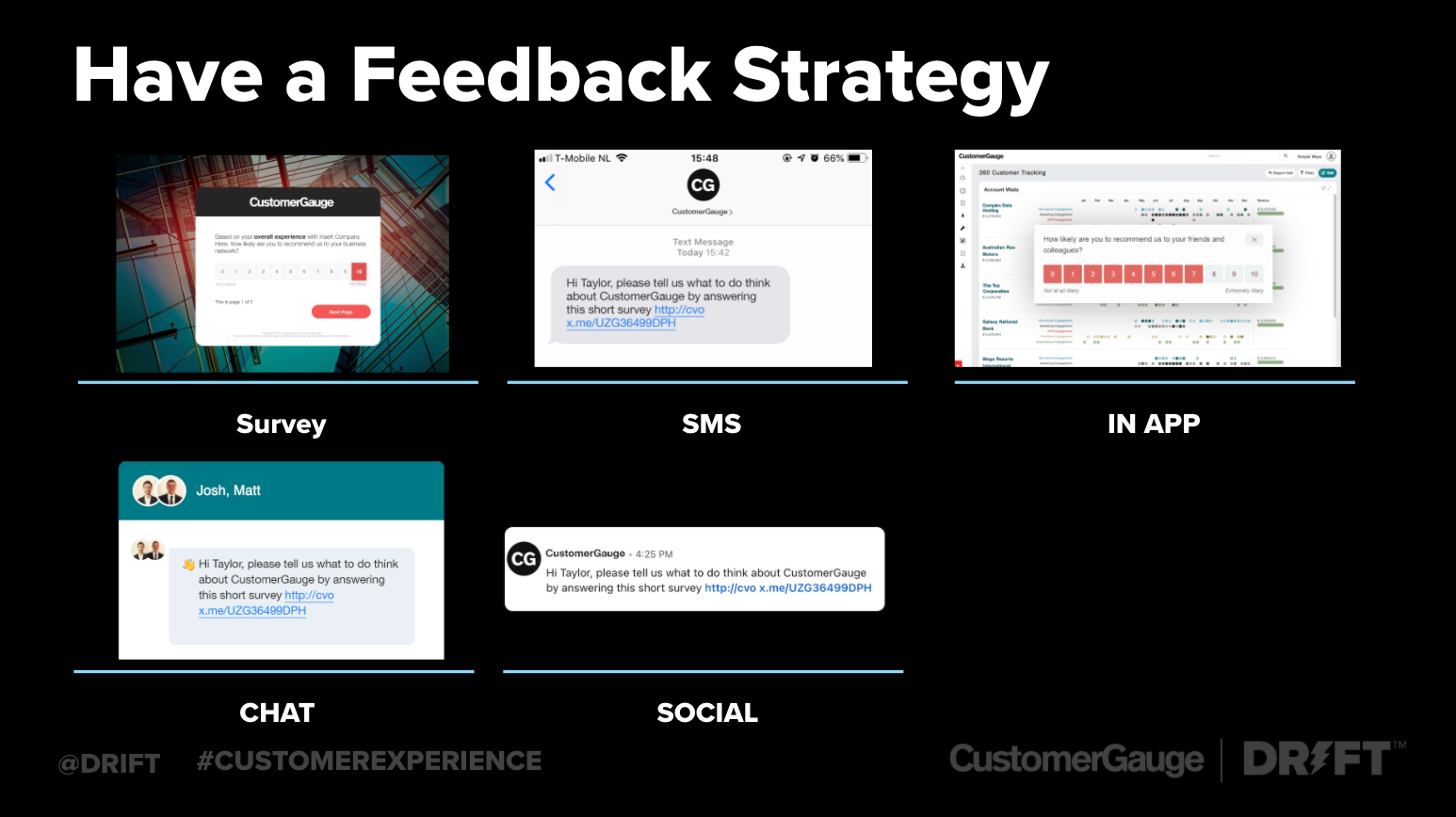
You need to tune into your customers at key points in the customer lifecycle, and post-onboarding is one of the most important.
If someone has a bad onboarding experience, that’s pre-churn.
When you disappoint a customer early on in the relationship, even if everything else goes better, they’ll still remember.
But that’s not the only time to listen to your customers. You need to understand how you’re doing seasonally, with surveys, SMS, in-app questions, chat, and social media. Ideally, you’re understanding how you’re doing every time you engage with a customer, however they engage with you.
Where do your customers engage with you? Where do they respond when you ask for feedback? What type of surveys are you sending? Find the channels that work best for your customers, the same way you diversify your marketing channels.
7. Focus on the Relationship
What’s going to make your customers succeed?
Your customers don’t work alone. You can’t focus on an individual – you have to think about the entire account to grow your retention rate, reduce churn, drive value, and ultimately increase marketing ROI.

The biggest mistake companies make is we put all of our faith and trust in one individual. We run all of our communication, all of our feedback, all of our insights, our recurring business reviews with them.
You can deliver a fantastic experience for them, but if their boss doesn’t buy into the value you’re offering, you’re still going to get churn.
Instead of one-to-one, think one-to-everyone.
Your customer experience should include the entire buying committee. Your C-level decision-maker sees the experience very differently than your end-user. So you need to think about your customer experience more holistically by account than by individual.
8. Your Customer’s Success = Your Success
What’s really going to grow lifetime value for a customer is turning them into an advocate.
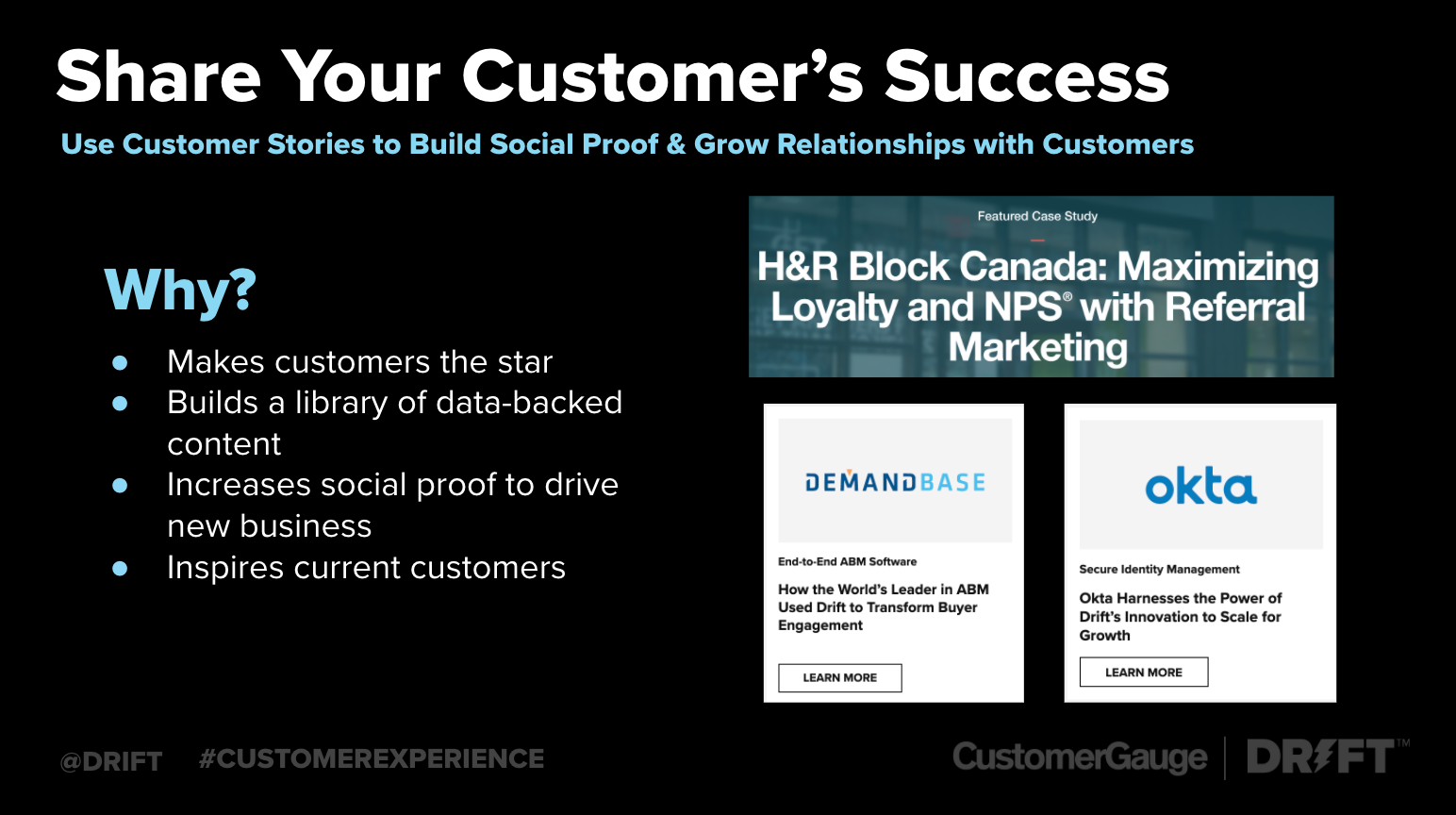
Instead of thinking about case studies, think about customer stories.
At Drift, those stories are part of our customer experience and marketing team. We call them pocket stories – small enough that the sales team can use them to sell, but compelling enough that anyone would want to read them.
You’re showing, rather than telling, the value you provide.
And when you put your customer at the center of the story, they become the hero of their organization – and who doesn’t want to be the hero?
9. Double Down on Education
When you empower your customers, you’re taking the relationship way beyond transactional.
We created Drift Insider to add incremental value to our products, so our customers can get the most out of them, not just from a tactical perspective, but to understand how Drift fits into their larger go-to-market strategy.
I’m still shocked by how many of our prospects find us through our education route first.
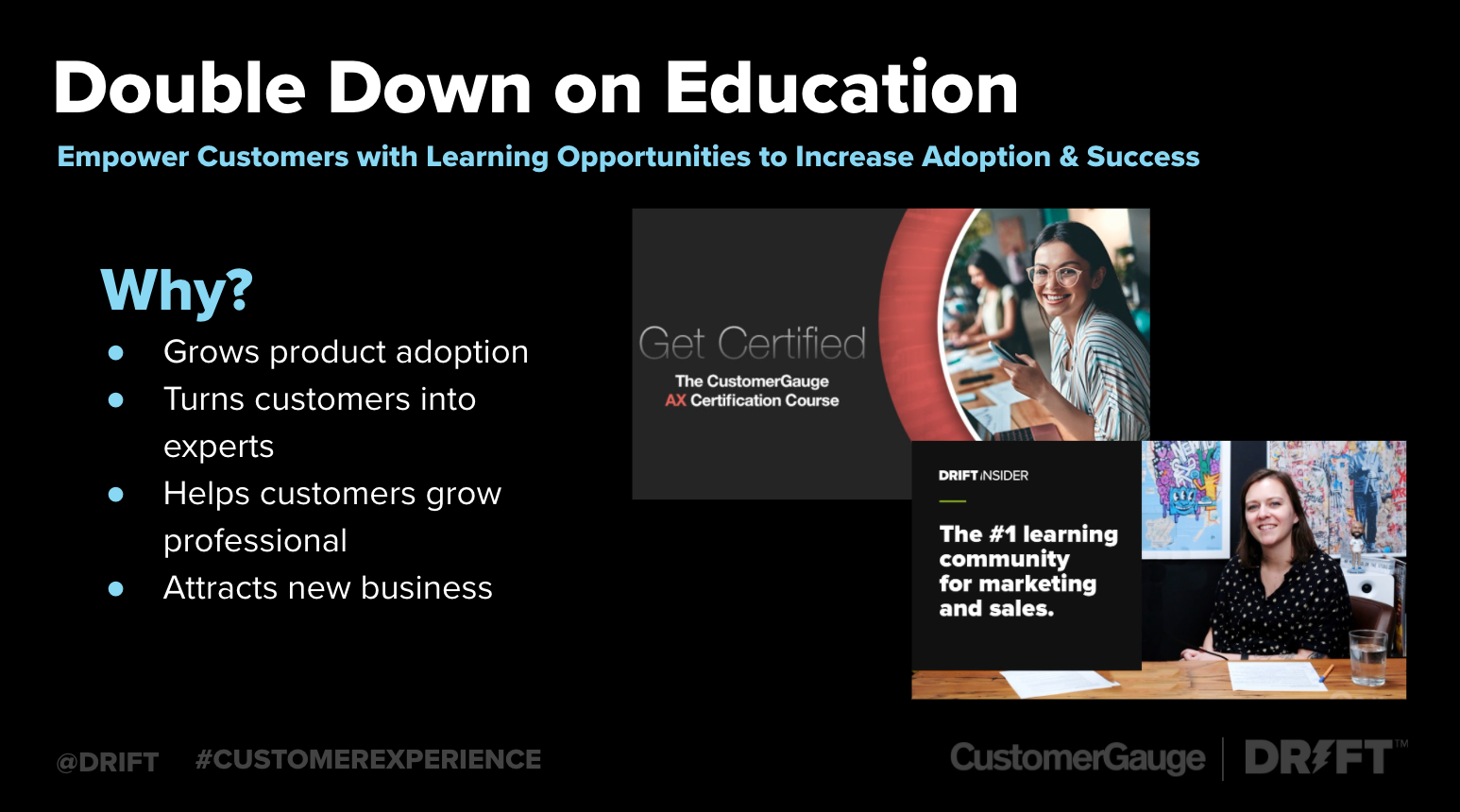
When we look into our retention numbers, we see it’s much more likely we’ll retain someone if they’re using our educational channels. When our customers invest in themselves and their business, they’re deepening their relationship with us.
The deeper the relationship, the stronger it is, and the more likely they’ll stay – even if they switch companies. It’s all about added value.
10. Invest in Referral Programs
Your best sales associates? They’re actually your customers.
Yet 54% of businesses don’t have a referral marketing program.

It doesn’t have to be complicated or expensive. But if the prizes are good enough, you’ll be pleasantly surprised how motivating this can be for the customers.
And it’s important to your bottom line: Companies that link referrals to NPS and customer experience have a higher referral sales volume – nearly double.
Remember, 84% of sales start with a referral.
The customers that come to you from word-of-mouth need less convincing up front, and they’re more likely to stick with you long-term.
But it only works if you…
- Hold the whole team accountable
- Bake customer-centricity into everything you do
- Personalize your website
- Respond to customers in real-time
- Optimize onboarding
- Listen to your customers
- Think of customer experience as account-based
- Celebrate your customers’ successes as your own
- Double down on education
…all of this adds up to a personalized, real-time customer experience that people can’t help but talk about. And when that happens? Get ready for the rocket ship 🚀





